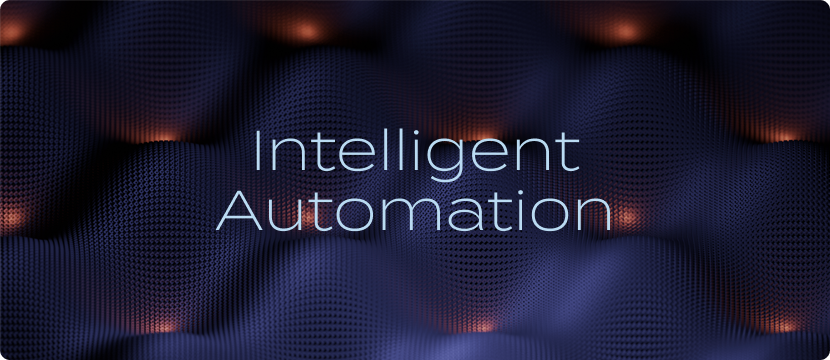

With the effect of the pandemic still looming over our heads, enterprises are adopting AI & Automation solutions to embrace change. From being a competitive advantage to fast-tracking enterprise growth, Intelligent Automation is driving transformation across business categories. Read on to know how a banking behemoth is utilizing the power of automation in 2022.
From remote work and digital supply chain management, recent developments driven by the pandemic, are rewiring enterprise operations at every stage of the value chain, with Automation and AI at the forefront of the change. As a result, Intelligent Automation has rapidly transitioned into the mainstream, becoming a cornerstone of competitive advantage. So, how will this evolution play out in 2022 and beyond. What factors will power the next phase of enterprise transformation, specifically in the finance sector?
In this interview with our AVP and Global Product Head for AssistEdge N Shashidhar, Somnath Menon, Group COO, Al Ahli Bank of Kuwait, lays out his vision and expectations for the future of intelligent enterprise transformation through Connected Automation.

Shashi: We believe Intelligent Automation as a technology can be leveraged to establish connections across the silos that is preventing Automation from scaling. We have recently launched our Connected Automation offering, which enables three fundamental connections – broadening the connection between people and automation, widening the relationship between processes and automation, and deepening the connection between data and automation.
Let’s start with the first connection – the relationship between people and automation. How do you think automation will influence ways of working, and how can talent management strategy leverage these shifts?
Somnath: Automation is benefiting people by improving all kinds of processes, making them faster, more efficient, and more effective. I can speak about banking and financial institutions, which is my domain. For instance, we now use one login for multiple systems, and that eliminates a substantial amount of friction. These systems are fully transparent, so users know where the inputs and outputs are. Over time, the framework could be completely system-agnostic. As people adapt to this new system of working, I believe there could be scope for incredible efficiency, innovation, and creativity, but it will be a gradual shift. I also believe that there will be complete overhauling of skills to meet this new paradigm, where automation will be dependent on the human factors that influence the inputs. Biases and cultural differences amongst people who create new automation tools must be normalized through a process of validation and monitoring.
Shashi: Now that we’ve addressed the talent paradigm, let’s talk about connecting business processes and automation. Automation is still a task-based intervention. Do you believe task automation will expand to process automation with the convergence of technology, low code and no code, process mining, and task mining? What is your view on how it will grow next year?
Somnath: Organizations already on their automation journey only need to ramp up their footprint, so that’s straightforward.

There is a knock-on effect for those already on the journey and seeing benefits. You may run a pilot in one department and then realize it can be effective elsewhere. We started our pilot in operations, thought it could offer help in other parts of the enterprise as well. I believe everything in life is a process, and you can build a workflow around everything. While breaking it into a process is fine, automating it is challenging. But there’s another problem. Sometimes, we try to automate the processes we have, even if they are not the most efficient, instead of revisiting or reengineering them. Conviction, strategy, and vision matter here. With these in place, automation has been and will be successful.
On the other hand, when people have only done it because someone has asked them to do so, that’s not the most efficient process. The process is critical. I am a process person. Everything is a process – make it efficient and then automate it for a win-win. You cannot build a fast F1 car by just focusing on the engine, it has to be the whole car, including the body, tyres, design, and everything else. Similarly, if you must transform any process, it must be end to end.
Shashi: I believe data can be a powerful growth driver for automation, but we’re yet to capitalize on this synergy. With process mining and task mining tools, enterprises can gather more intelligence about how the process is executed and check for deviations. At EdgeVerve, we are also seeing that the need for document digitization and intelligence is driving a significant uptake in the intelligent document processing. How do you think this expanded scope will unfold for data, digitalization, and unstructured data to become part of the automation journey?
Somnath: Raw data is of no use unless it is converted into meaningful datasets that serves our needs or the customer’s needs. Data is the new oil, as it is now commonly said, so it is very valuable. However, without a plan and an understanding of what the end purpose is, it is as good a crude oil, which needs to be processed and refined into specialized end products. Given the depth of data available from different sources, the challenge is to define the quantity and source of data required to meet a specific delivery. So, for example, if the Bank requires performance indicators across an industry over many years, then it will need to pull data differently, than if it is trying to predict the future trends in an industry.

For example, when we have to look at some reports, just the interpretation of what goes in the report is cerebral, but it doesn’t have to be. Every time you generate a report, you should be able to automate it, put in the parameters, and pull the requirement information onto a dashboard. Data is massive, and it often gets thrown away because it’s not utilized. Data and automation need a lot of integration with AI to make adoption meaningful.
Shashi: What according to you could be the biggest driver of automation adoption?
Somnath: In terms of the future, robotics must increase convenience. It helps to think of the three Cs – customer, controls, and cost. We need to ensure automation implementation delivers what the customer wants, such as simplicity, convenience, paperless services.
If automation increases control for the customer and banks, it’s worth doing. These include external controls like KYC and regulatory requirements and internal controls like error-free, well-controlled processes.
Then, there are always questions about cost and RoI.
Each of the C’s is equally important. Also, they overlap frequently. Based on your specific context, you may have a prominent C, but they all cut across the entire automation lifecycle and must factor into any automation decision.
Shashi: How will organizations balance the three Cs you talked about, especially control, since some amount of federated decentralized approach is required to scale automation?
Somnath: That’s a good point. Sometimes you become so singularly focused that you don’t think about the rest. In the name of customer satisfaction, growing the customer base, and making it quick and fast for the customer, the easiest thing to do is to drop the controls and compromise on them. I think that’s a disaster. You must never compromise on controls, especially which are regulatory or detrimental to your organization’s health. An error could sink an entire business. Controls are critical. Don’t even think of comprising there.
That is why banks still have a significant advantage over all the new fintechs. They are trusted. Trust comes with controls. While it may not play as substantial a role in every context, with transactions for instance, but to put my life savings somewhere, I want to know where it is. It needs to be where I trust, which is why you find more integration between fintechs and banks because you still need both. That said, there may be a day when banking as we know it today will not exist.

At the same time, you can’t forget the cost. If your strategy says you can be number one at any price, then go for it. You can’t ignore your context, but you can ask questions. Is the cost of my implementation relevant to my vision? Am I getting what I want?
Shashi: What role do you think automation can play in ensuring more robust controls?
Somnath: There are a lot of controls in the bank. In IT and security, several areas can benefit heavily from automation. The Framework Core in NIST’s Cybersecurity Framework lists five concurrent and continuous functions – Identify, Protect, Defend, Respond, and Recover. Identify and Protect are always-on functions where intelligent technology can automate a lot of work. For instance, automation could help me know my “single points of failure” and compromised areas. If I have something that ultimately scans my entire network and architecture on a regular daily basis, automated, I would be at peace because I know the threat factors are being looked at all the time. The second part is when there is an attack – you need to know what has gone wrong, and you need a way to Detect it. If I have the most possible and plausible factors already automated and automation can tell me where to look, detection becomes quicker. I still have to Respond. Here, automation can decide whether I cut off the threat, isolate it, or watch it. Again, in the case of Recover, there is a considerable role that automation can play. Finding out when the last backup was completed and how it can be recovered quickly are essential questions, but today, these things take a lot of time, and I’d say close to 90% of them are ready for automation.
When you begin your automation journey, you need to start small, see the benefits, and consider scaling. There are several opportunities, in our case, that we unlocked through this approach. When we started, we had everyone add what was painful for them. Then we completed a rationalization exercise that helped decide where we’d get the biggest bang for our buck because we needed to show a benefit. While it is a long game, it’s better to show some measurable impact early on. We’ve had some great success. Specific customer-facing tasks like salary processes that would previously take 72 hours now only take three minutes. That is a quantum leap visible to everyone, and it’s a classic example of driving value for the process, that ticks off all the three Cs.
Loved what you read?
Get practical thought leadership articles on AI and Automation delivered to your inbox
Loved what you read?
Get practical thought leadership articles on AI and Automation delivered to your inbox
Shashi: There are things that we thought would take off but haven’t. We expected the adoption of AI in automation to increase rapidly but that didn’t happen. People are using the AI to automate conversation interfaces or document processing but not for the prediction AI is capable of. With the proliferation of 5G, we thought automation would span connections to edge devices, but that’s not taking off either. Also, with critical workloads on the cloud, we expected cloud-based automation to pick up, but we haven’t seen that. Clients aren’t ready for a SaaS, cloud multi-tenant offering. Even with low-code, AI, IoT, there is a pushback, so what are your thoughts on this resistance??
Somnath: First, all of what you said should have happened, will happen. And it’s just a question of when. You might want it faster from where you sit, but every one of these initiatives have constraints. For example, AI based analysis is still more backward-looking and does well with history. No one has quite cracked prediction just yet and it is not the technology that is lacking, it is a clear articulation of the business needs that needs to evolve.
I’m a big advocate of cloud-driven transformation, but it’s not going to happen quickly. The issue is mostly geopolitical and also influenced by security concerns. Platforms and tools may claim to be secure, but the encryption key is with the vendor or cloud owner. If there is a political, judicial, or competition need, they can use that key and share the data, and that’s why there is a huge trepidation in sharing data. In our case, we are working towards holding the encryption keys for our cloud footprint.
Shashi: In closing, what is your prediction for how Connected Automation will grow in 2022?
Somnath: COVID-19 will unfortunately continue to disrupt life, though hopefully on a diminishing scale. People are resilient, and open to either working from home, of from the office, or a hybrid. Connected Automation will capitalize on this appetite to drive a more efficient and frictionless experience. We will observe the exact contours of the transformation as it unfolds, but the journey itself is well and truly underway.
Disclaimer Any opinions, findings, and conclusions or recommendations expressed in this material are those of the author(s) and do not necessarily reflect the views of the respective institutions or funding agencies






